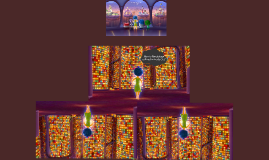

Long-time viewers of the television show Friends were significantly better at accurately recalling spatial information about the show's set, because the camera never moves away from the " fourth wall". Viewing spaces on screen from a stable point of view is important for short-term spatial coding and long term spatial memory.
Inside out the movie psychology series#
The Greenwich Village building seen in TV series Friends Spatial Information In addition, the average correlation in taste between individual viewers is rather low and not well predicted by film critics. However, similar eye-movement and similarity in visual processing does not guarantee similar brain responses. Tightly edited films exert more control on brain activity and eye-movement than open-ended films. It was also determined that the level of control a movie has on someone's mental state is highly dependent upon the cinematic devices (pans, cuts and close-ups) it contains. When compared to a random sequence of scenes, the specific order of events seemed to be strongly associated with this similarity in brain activity. Despite the seemingly uncontrolled task and complex nature of the stimulus, brain activity was similar across viewers’ brains, particularly in spatiotemporal areas. Using fMRI brain imaging, researchers asked participants to watch 30 minutes of The Good, the Bad and the Ugly (1966) as they lay on their backs in the MRI scanner. Studying the neuroscience of film is based on the hypothesis that some films, or film segments, lead viewers through a similar sequence of perceptual, emotional and cognitive states. Sequence of events Ĭognitive neuroscience research demonstrates that some movies can exert considerable control over brain activity and eye movements. In the end, however, montage linearity that creates temporal continuity is more important than plot for recall and understanding of a narrative's events.

When a familiar line is not present, more experienced viewers are significantly better at comprehending a complex narrative by "filtering" out editing discontinuities. Overall, our brains accept the perceptual discontinuities found in films, but it is ultimately easier for viewers, regardless of their experience, to understand cuts that follow a continuous and familiar line of action as opposed to ones that are more discontinuous. Schwan & Ildirar (2010), who focused solely on inexperienced viewers’ ability to comprehend film, found that the comprehensibility of films was determined by whether or not they followed a familiar line of action. Thus the oneiric nature of films is familiar to viewers and allows them to innately understand the editing despite discontinuities. Our dreams tend to jump around from place to place and situation to situation without any real sense of continuity. Another possibility that Murch explores to explain humans’ innate acceptance of film cuts is the way in which we dream.

When you turn to look at an object, for example, you normally blink, thus creating a visual break in continuity between what you were looking at and what you are now looking at. Walter Murch suggests that this is because viewers are in fact used to cuts in their everyday lives through the act of blinking. Even though we see reality in a continuous flow of linked images, in movies, cuts seem to work, regardless of how experienced a viewer is. However, despite this, viewers accept cuts as a natural storytelling technique in film. įilm cuts are instantaneous, perceptual, and sometimes temporal discontinuities that do not exist in our own realities. Research focusing on recall ability for linear versus non-linear narratives suggests that temporal changes impact memory of events, but not comprehension. Editing creates the transition between events. Editing Ĭuts and flashbacks represent types of editing that alter the normal temporal sequencing of events, creating non-linear narrative structures. Some aspects of film are driven by bottom-up or sensory guided factors (such as light, motion or sound), whereas other aspects depend more on top-down or conceptually driven factors, like past experiences and internal motivations. In narrative films, plots are guided by camera placement and movement, dialogue, sound effects, and editing. 2.1 Expertise and awareness of audience manipulationįilm is rather unusual as it involves an integration of visual and auditory stimuli.


 0 kommentar(er)
0 kommentar(er)
